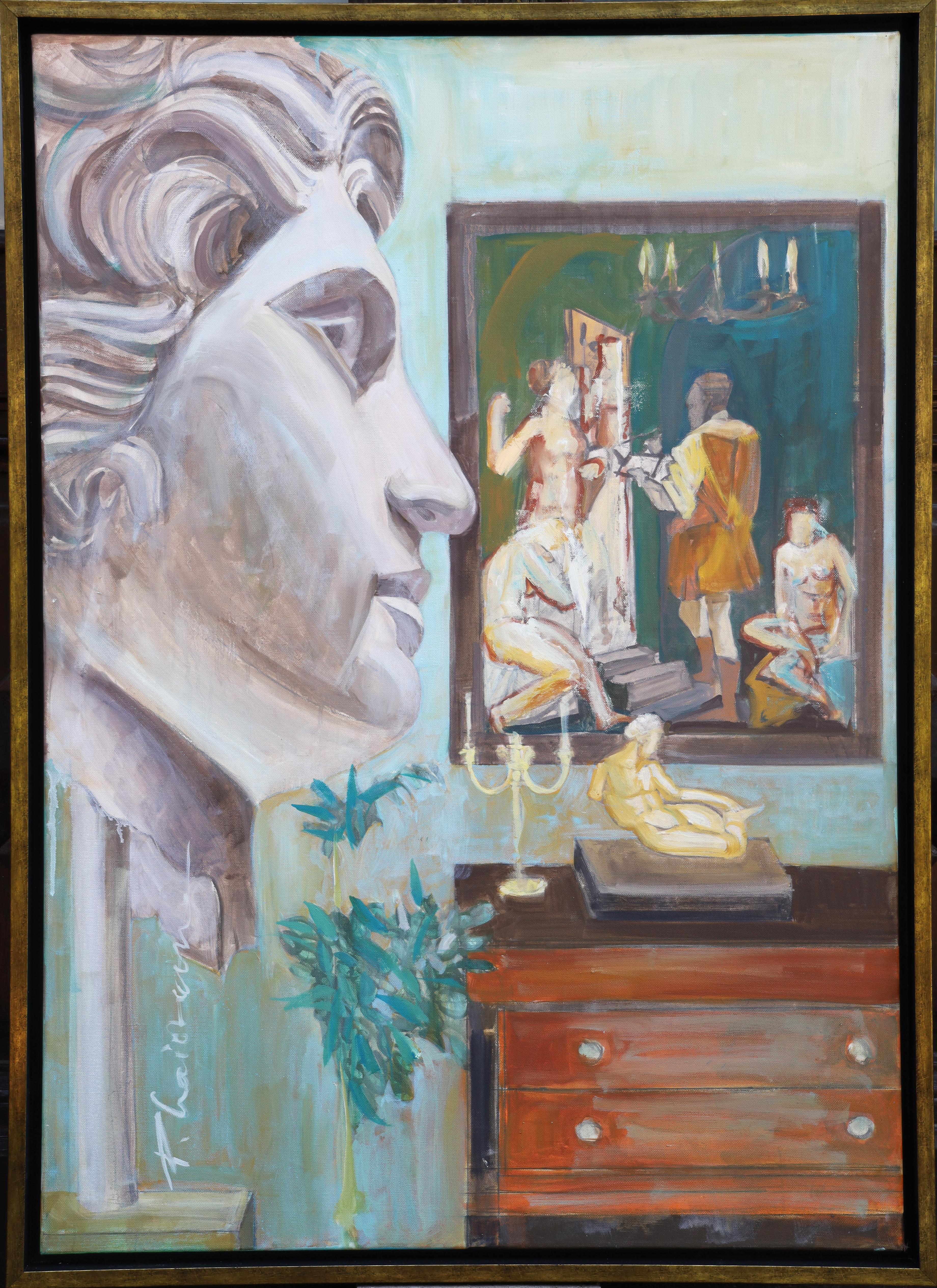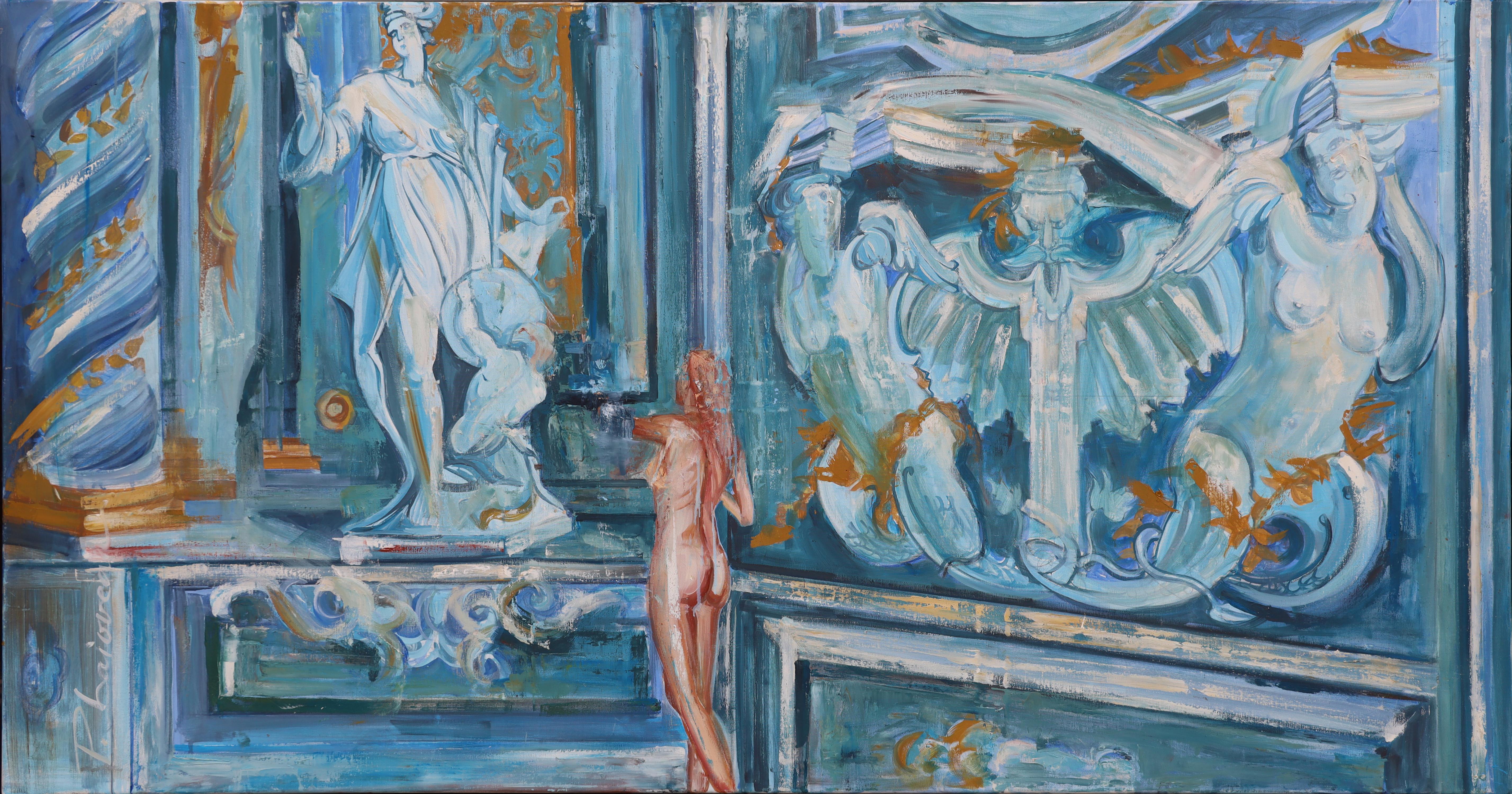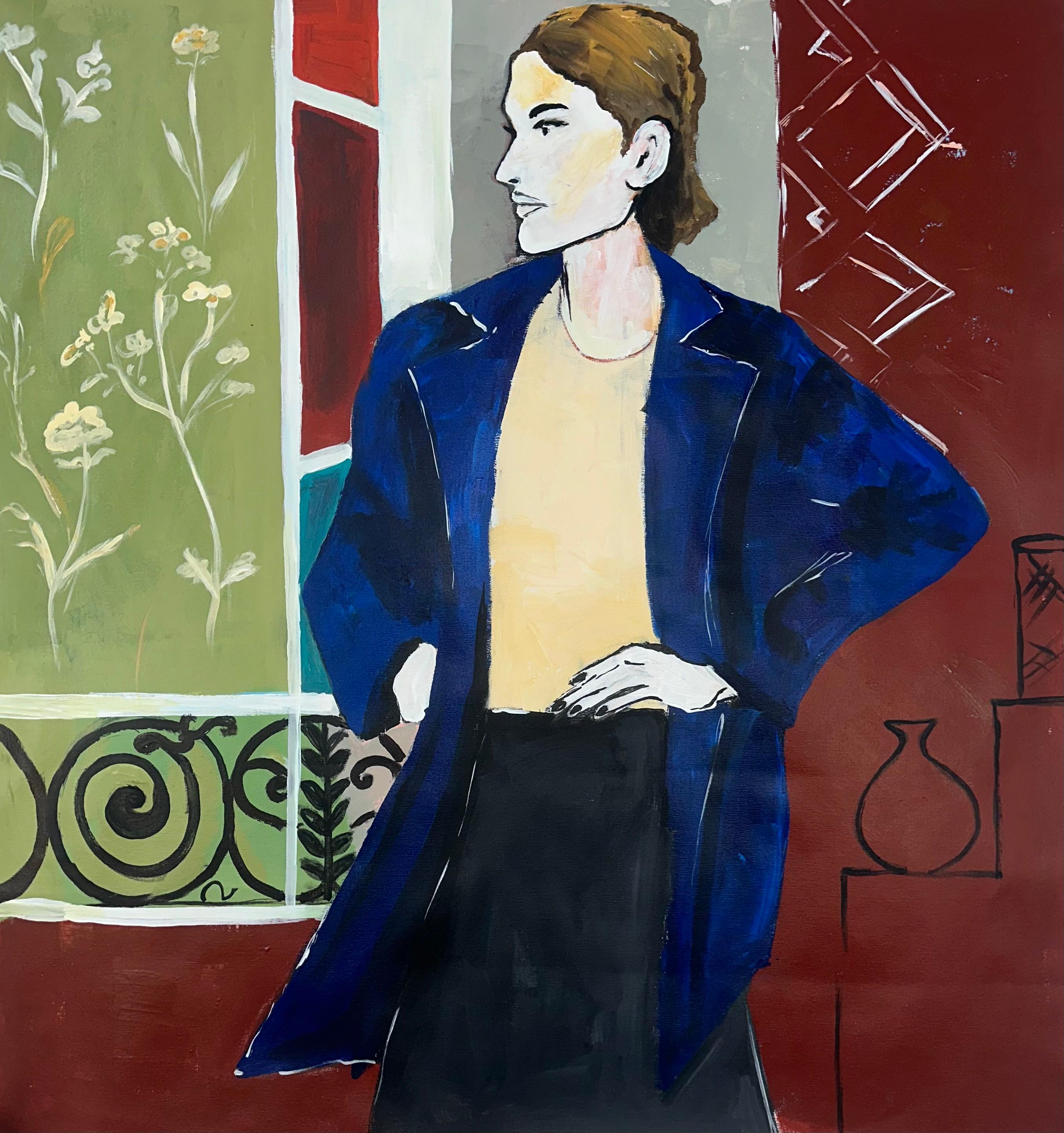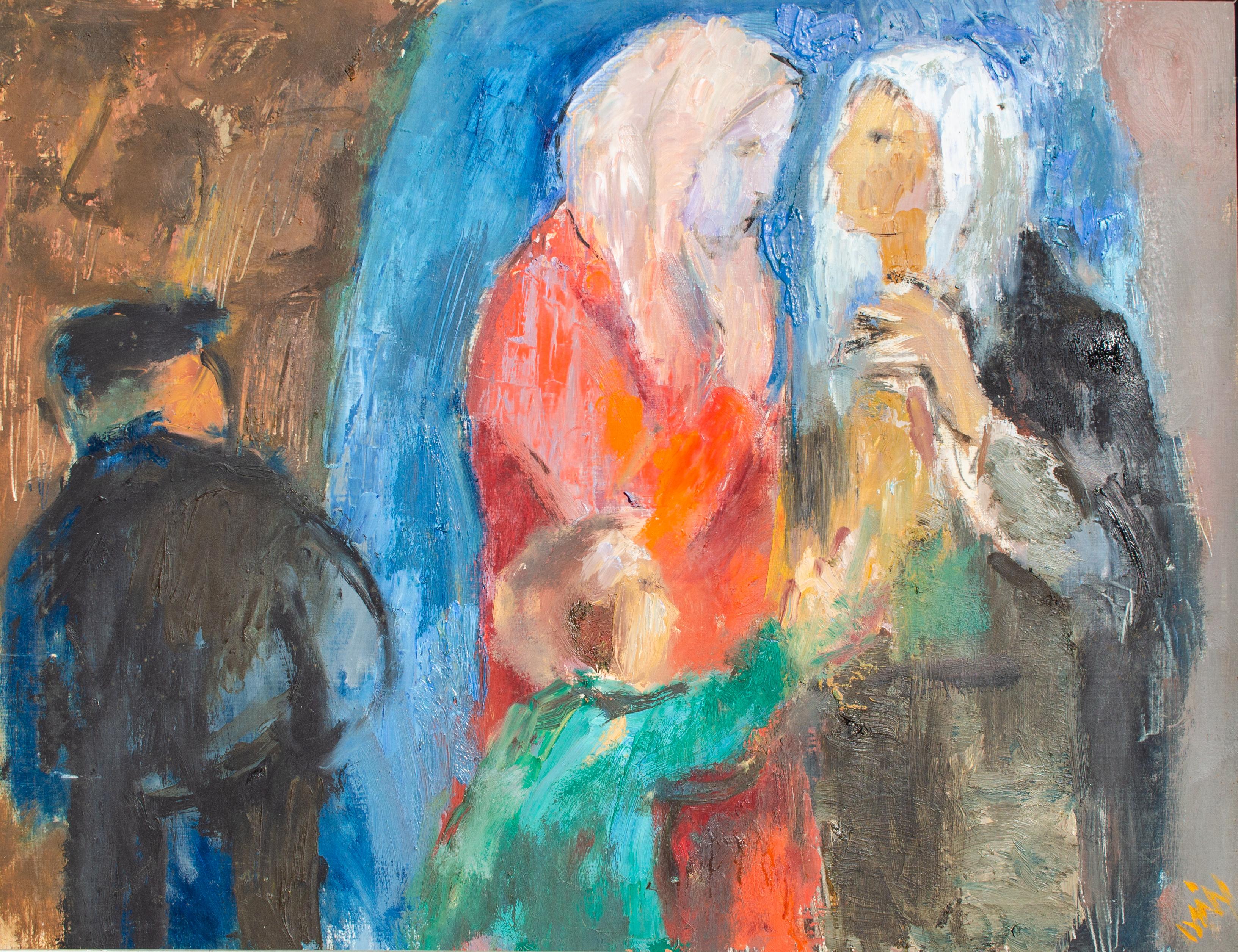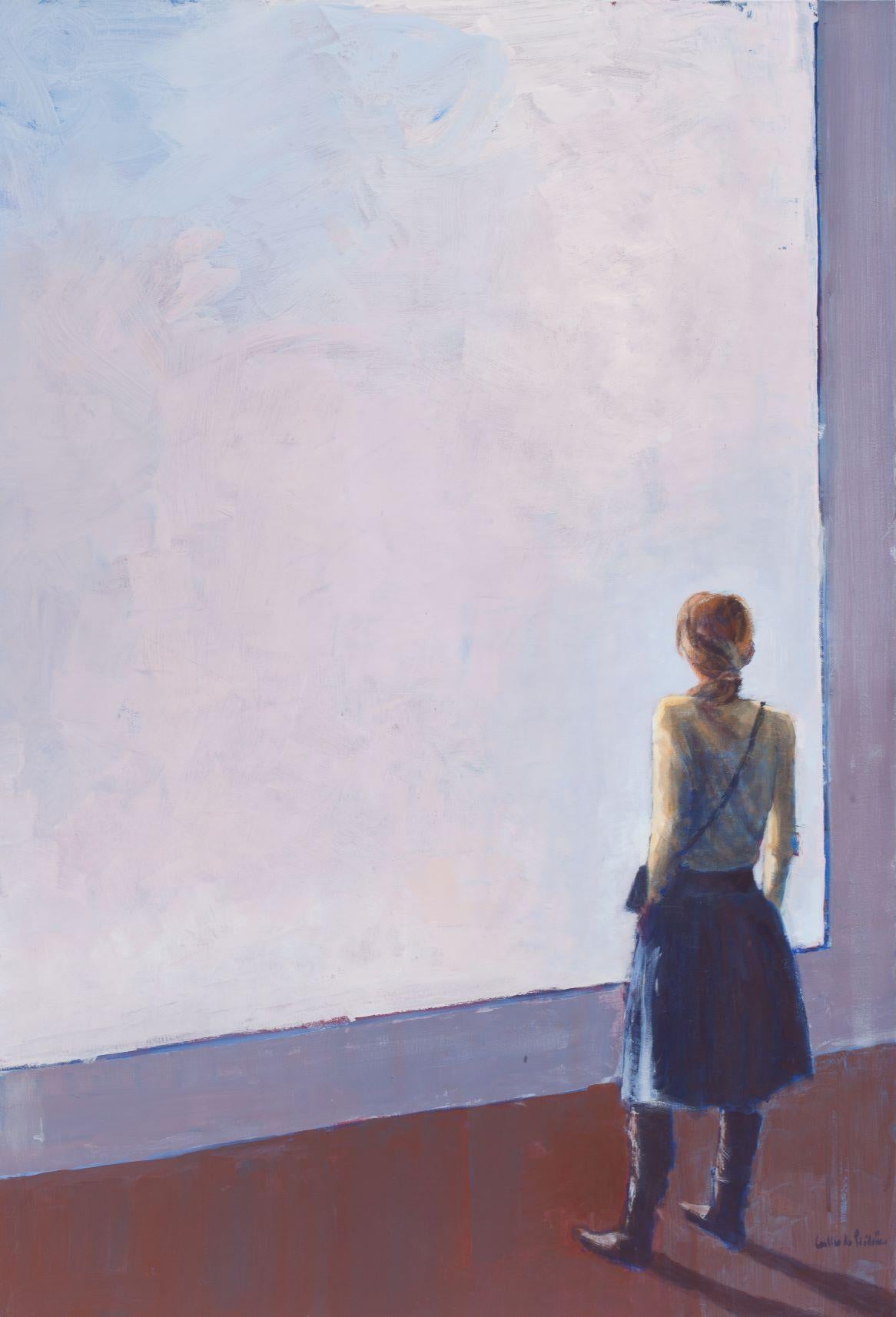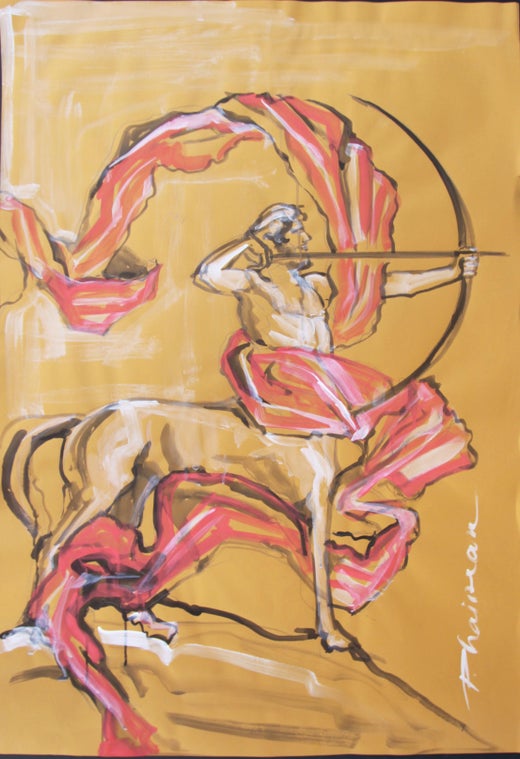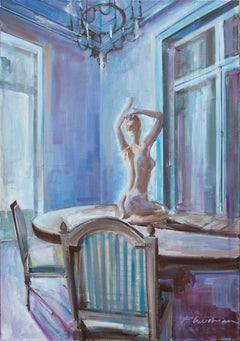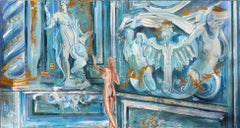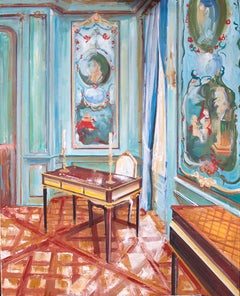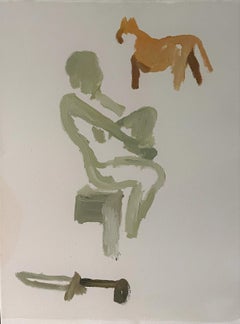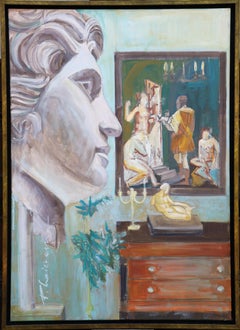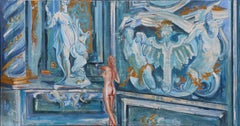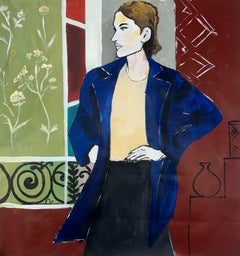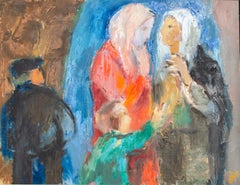Items Similar to Looking at the World
Want more images or videos?
Request additional images or videos from the seller
1 of 5
Paula CraioveanuLooking at the World
$3,040
$3,80020% Off
£2,307.95
£2,884.9420% Off
€2,644.85
€3,306.0620% Off
CA$4,314.88
CA$5,393.6020% Off
A$4,706.44
A$5,883.0520% Off
CHF 2,472.41
CHF 3,090.5220% Off
MX$56,938.28
MX$71,172.8620% Off
NOK 30,930.71
NOK 38,663.3820% Off
SEK 29,204.74
SEK 36,505.9320% Off
DKK 19,741.95
DKK 24,677.4420% Off
About the Item
Oil on canvas
- Creator:Paula Craioveanu (1976, Romanian)
- Dimensions:Height: 40 in (101.6 cm)Width: 27.5 in (69.85 cm)
- Medium:
- Movement & Style:
- Period:
- Condition:
- Gallery Location:Santa Monica, CA
- Reference Number:1stDibs: LU1047110272942
Paula Craioveanu
Trained in Bucharest and New York as architect and painter. Holds a degree in Architecture and a PhD in Visual Arts. Presently working as a full-time artist.
About the Seller
5.0
Vetted Professional Seller
Every seller passes strict standards for authenticity and reliability
Established in 2009
1stDibs seller since 2018
196 sales on 1stDibs
Typical response time: 2 hours
- ShippingRetrieving quote...Shipping from: Santa Monica, CA
- Return Policy
Authenticity Guarantee
In the unlikely event there’s an issue with an item’s authenticity, contact us within 1 year for a full refund. DetailsMoney-Back Guarantee
If your item is not as described, is damaged in transit, or does not arrive, contact us within 7 days for a full refund. Details24-Hour Cancellation
You have a 24-hour grace period in which to reconsider your purchase, with no questions asked.Vetted Professional Sellers
Our world-class sellers must adhere to strict standards for service and quality, maintaining the integrity of our listings.Price-Match Guarantee
If you find that a seller listed the same item for a lower price elsewhere, we’ll match it.Trusted Global Delivery
Our best-in-class carrier network provides specialized shipping options worldwide, including custom delivery.More From This Seller
View AllNude In Interior
By Paula Craioveanu
Located in Santa Monica, CA
Oil on canvas
Category
21st Century and Contemporary Contemporary Nude Paintings
Materials
Canvas, Oil
$2,280 Sale Price
40% Off
The Fresco
By Paula Craioveanu
Located in Santa Monica, CA
Oil on canvas
Category
21st Century and Contemporary Contemporary Nude Paintings
Materials
Canvas, Oil
$3,000 Sale Price
40% Off
Interior at Frick
By Paula Craioveanu
Located in Santa Monica, CA
Oil on canvas.
Category
21st Century and Contemporary Contemporary Interior Paintings
Materials
Canvas, Oil
$3,200 Sale Price
20% Off
Chose Your Own Adventure
By Airom
Located in Santa Monica, CA
Intriguing set of choices. Artist's interpretation of a still life.
Category
21st Century and Contemporary Fauvist Nude Paintings
Materials
Acrylic
$210 Sale Price
65% Off
The Sphinx
By Paula Craioveanu
Located in Santa Monica, CA
Acrylic on canvas.
Category
21st Century and Contemporary Contemporary Figurative Paintings
Materials
Canvas, Acrylic
$1,600 Sale Price
20% Off
The Party
By Linda H. Smith
Located in Santa Monica, CA
Acrylic on canvas
Category
2010s Fauvist Interior Paintings
Materials
Canvas, Acrylic
$640 Sale Price
20% Off
You May Also Like
The Painter's Studio original painting by Paula Craioveanu oil on canvas Framed
By Paula Craioveanu
Located in Forest Hills, NY
"The Painter's Studio", oil on canvas, 39x27.5in / 100x70cm
The artist's studio and art objects part of artist' life and work. A sculpture, an antique head and a painting that remin...
Category
2010s Academic Figurative Paintings
Materials
Canvas, Oil
THE FRESCO - original large oil canvas painting by Paula Craioveanu
By Paula Craioveanu
Located in Forest Hills, NY
"The Fresco"
Oil on canvas
Large original, one-of-a-kind, painting - 33.5x63in / 85x160cm
Nude in a Italian Baroque interior, with blue marine painted fresco.
Picture from the sol...
Category
2010s Contemporary Landscape Paintings
Materials
Canvas, Oil
$1,800 Sale Price
40% Off
New Dimension Original painting
Located in Zofingen, AG
New Dimension is a step into a space where there is a sense of transition, a movement towards something unknown, but at the same time tantalizing. It is a work about inner search, ab...
Category
2010s Contemporary Figurative Paintings
Materials
Canvas, Oil
Iván Szilárd Modernist Conversation Painting
Located in New York, NY
Iván Szilárd (Hungary, 1912-1988)
Találkozás, 20th century
Oil on board
21 1/4 x 27 1/2 in.
Framed: 25 1/2 x 31 1/2 in.
Signed lower right
Exhibited at:
Csontváry Terem
Lovely pain...
Category
20th Century Modern Figurative Paintings
Materials
Oil
French Contemporary Art by Caroline de Piedoue - La Toile
By Caroline de Piedoue
Located in Paris, IDF
Caroline de Piedoue is a French artist born in 1954 who lives & works in Berchères-sur-Vesgre, Eure-et-Loire, France. Her theme of her paintings is largely urban but also beach scene...
Category
2010s Contemporary Figurative Paintings
Materials
Canvas, Acrylic
Michele Dubain, Painting, Oil on Canvas
Located in Montelabbate, PU
Figurative. Oil on canvas by Michele Dubain, Abstract Expressionism
Category
1990s Belgian Expressionist Paintings
Materials
Canvas
More Ways To Browse
The Look
Impressionist Window
Duane Hanson
Classical Paintings Architectural
Artist Autograph
Dutch Oil Painting Interior
Church Interior Painting
Faye Vander Veer
Louis Meisel Gallery
Antiques Oil Interior Paintings
Janis Brekte
Large Paintings Of Interiors
I Love You Mr Brainwash
Walter Feldman
Coke Bottles
Paintings Of Room Interiors
Heath West
Kitchen Scene Painting
